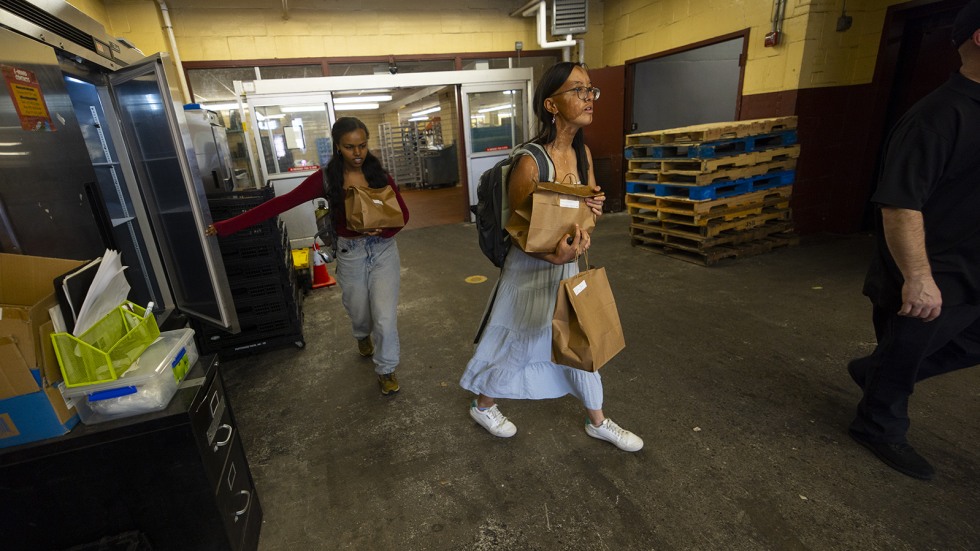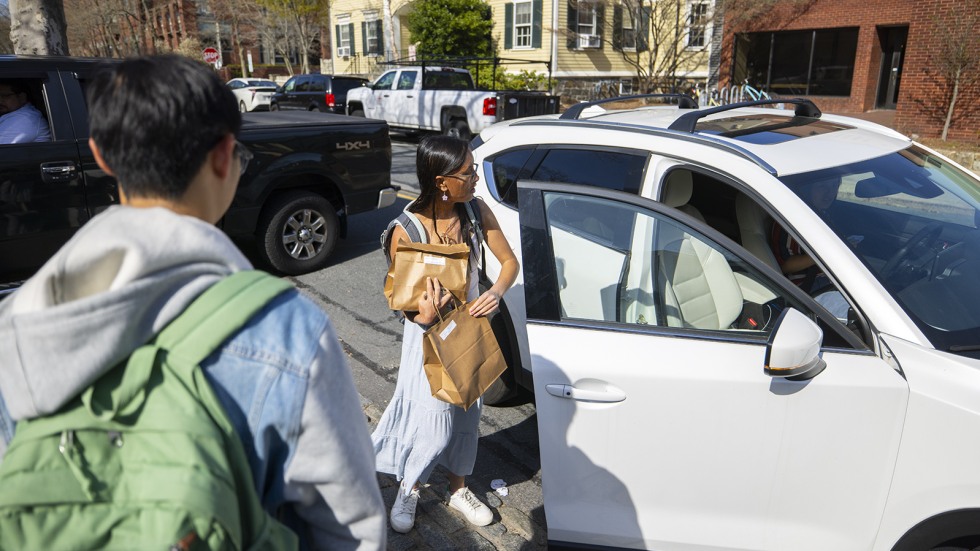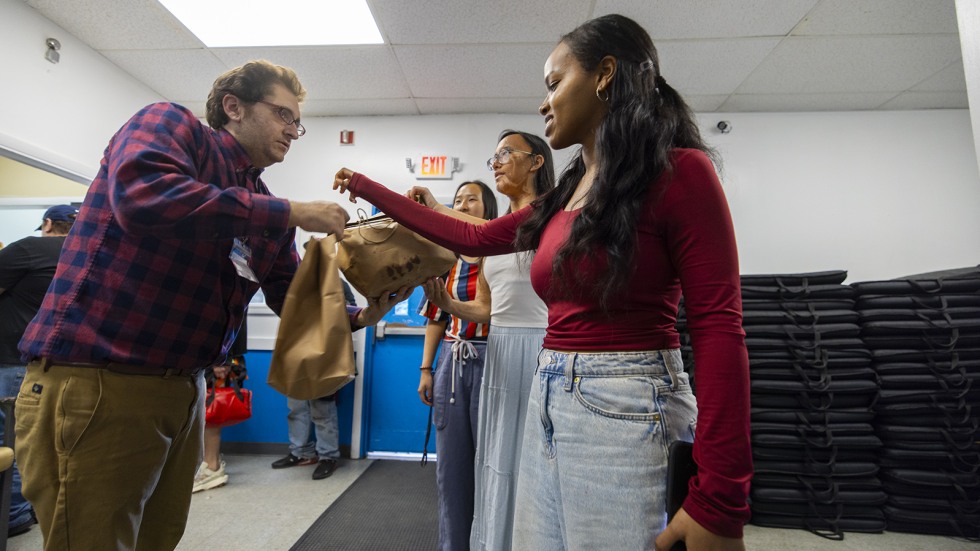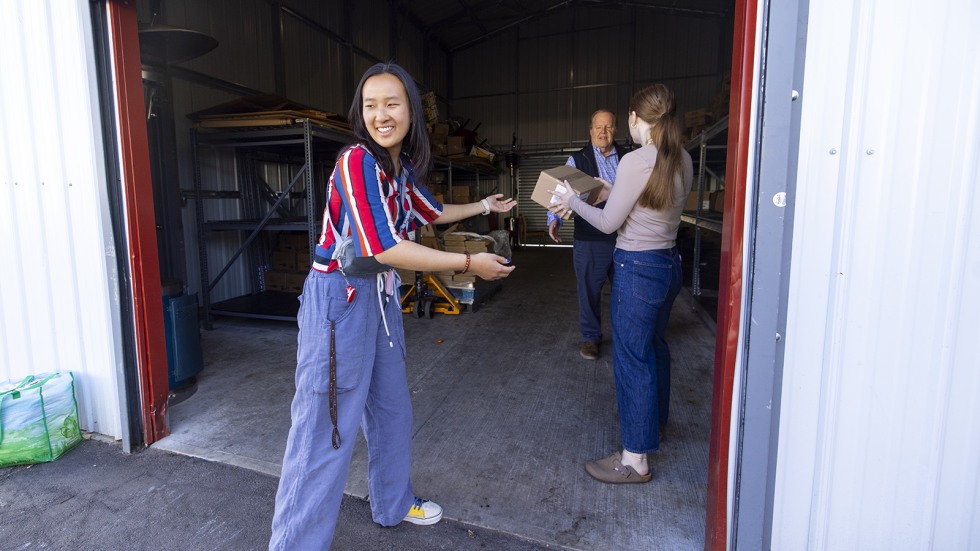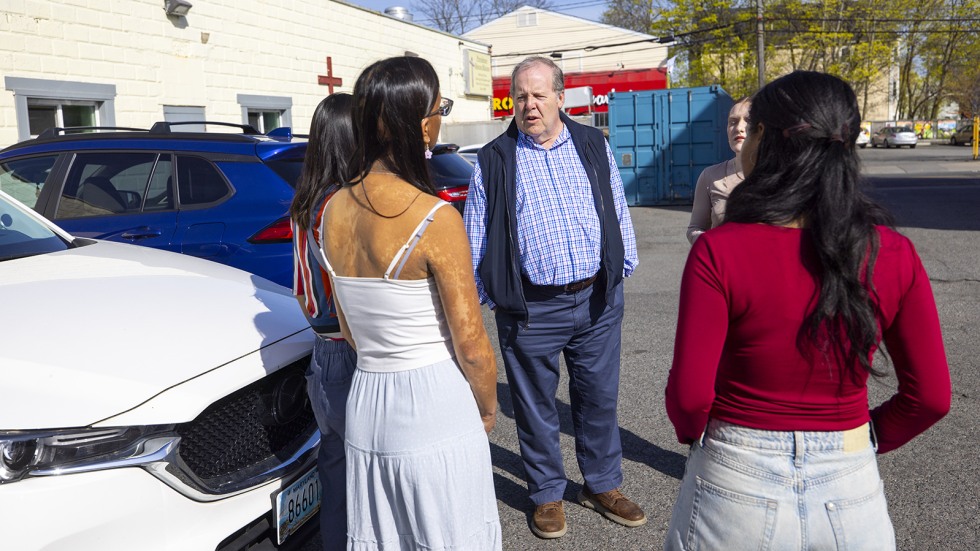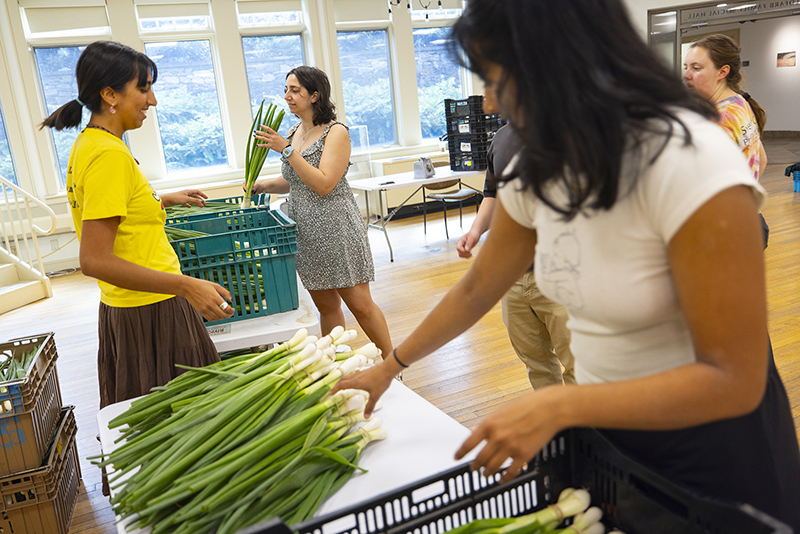PROVIDENCE, R.I. [Brown University] — Every afternoon at 4 p.m., the Providence Rescue Mission opens its doors on Cranston Street in Providence’s West End to offer hundreds of Rhode Islanders a warm, hearty meal — and for those experiencing homelessness, a safe place to spend the night.
The organization also serves breakfast and lunch and distributes thousands of food boxes each week, filled with grocery staples to help residents and families prepare meals at home.
Most of the food — enough for 1,500 meals each week — is donated by local restaurants, businesses and schools, including Brown University, according to Sean Carew, executive director of the faith-based organization.
“Each time we get a donation from Brown, it’s often enough to serve a full sit-down meal to our community — or close to it,” Carew said. “Instead of letting it go to waste, we repurpose it and put it to good use.”
Brown’s donations are led by the Food Recovery Network, a student organization that partners with Brown Dining Services to reduce waste by collecting surplus food from campus dining halls and redirecting it to local nonprofits like the Providence Rescue Mission, churches and community organizations.
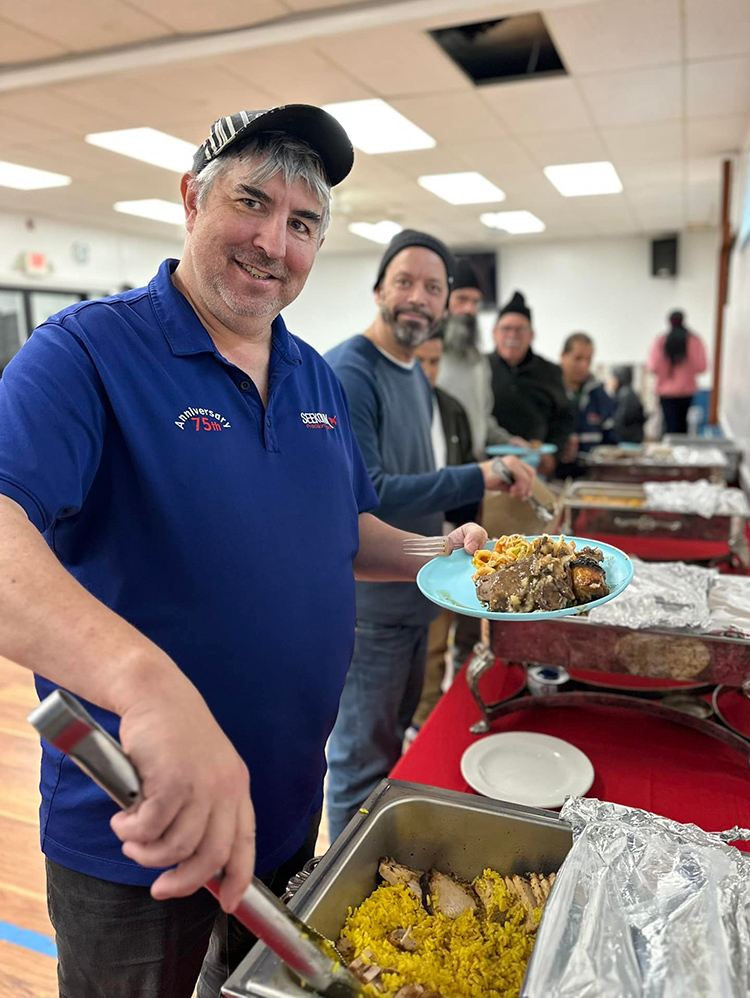
Each academic year, Brown’s Food Recovery Network recovers roughly 15,000 pounds of food. Most donations include items that are safe to store and transport, like bread-based goods including bagels, muffins and rolls, and fresh produce like apples, bananas and other whole fruits and vegetables.
Carew said the Mission coordinates deliveries from Brown multiple times a week, and the food supplements the organization’s daily meals.
“It’s not just about food — it’s about dignity,” Carew said. “It’s about giving people quality food they can feel good about — food they’re proud to serve their kids.”
Locally-sourced, fresh, high-quality foods are a hallmark of Brown’s dining program, and by redirecting surplus food, the University advances its mission to serve the community, said George Barboza, vice president of dining programs.
"Brown is an anchor institution in Providence,” Barboza said. “And I think it behooves us to be a good community partner — to show up consistently, listen to what our community partners need and collaborate in ways that make a meaningful, lasting impact."
From campus kitchens to community tables
Established in 2009 by four Brown undergraduates, the Food Recovery Network is one of the longer-running student-led service initiatives on campus. The group is part of a national student-run nonprofit founded at the University of Maryland, which now includes more than 200 chapters at colleges and universities across the country — Brown’s being one of the earliest.
For current Brown undergraduate Ayla Kim, it’s not just the mission that’s sustained the group for over a decade — it’s the students behind it. Kim, a behavioral decision sciences concentrator from New Jersey, joined during her first year as a volunteer driver, motivated by witnessing food insecurity in her home community. She now serves on the executive board.
“Students here at Brown come with not only intellectual talent, but a real desire to apply it to social causes — you see that in so many student organizations on campus,” Kim said. “I honestly credit the admissions office for bringing such thoughtful, driven people together on this campus who genuinely want to make a difference. That mindset is what I think has kept the Food Recovery Network strong over the years.”
